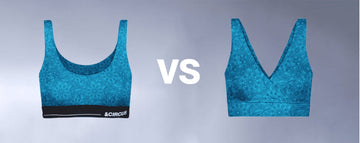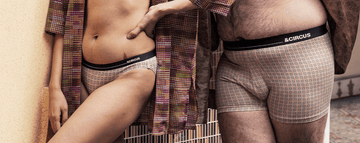Quick Listen:
Imagine slipping into underwear so soft it feels like a gentle breeze brushing your skin no irritation, no rough edges, just effortless comfort. For years, lingerie has been marketed through its visual appeal: intricate lace, vibrant hues, or the promise of a flawless silhouette. Yet a subtle shift is reshaping the industry. Tactile softness the luxurious, almost imperceptible feel of fabric against skin is emerging as a critical factor in what consumers demand. In an era fixated on appearances, why is the lingerie world only now recognizing the profound importance of how fabric feels?
Comfort Redefines Luxury in Lingerie
The global lingerie market, valued at USD 90.0 billion in 2024, is on track to reach USD 151.0 billion by 2033, growing at a compound annual growth rate of 5.78%. Asia-Pacific commands over 40.2% of the market share, fueled by rising incomes and a surge in demand for undergarments that blend style with comfort. Today's consumers whether shopping for bras, briefs, or shapewear prioritize pieces that offer breathability and ease. The rise of remote work, body positivity, and wellness culture has redefined priorities. Comfort isn't just a perk; it's the new standard for luxury.
Visit any retail store or browse an e-commerce platform, and the trend is clear: fabrics that feel as good as they look are taking center stage. Shoppers are investing more in premium lingerie, driven by a desire for self-expression and personalized style. The lingerie fabrics market, valued at USD 12.5 billion in 2023, is projected to grow to USD 18.9 billion by 2032, with a steady 4.5% CAGR. This growth stems from a demand for high-quality materials that deliver comfort, durability, and visual appeal. Consumers are increasingly discerning, seeking fabrics that are breathable, sustainable, and reflective of their unique preferences a shift that's forcing brands to rethink their approach or risk obsolescence.
Micromodal: The Fabric of the Future
At the forefront of this transformation is micromodal, an eco-friendly fabric celebrated for its unparalleled softness and sustainability. Made from beechwood pulp, micromodal outperforms cotton in softness, surpasses synthetics in breathability, and uses fewer resources than traditional fabrics, making it a favorite among environmentally conscious consumers. The lingerie market, valued at USD 44.92 billion in 2024 and expected to climb to USD 87.35 billion by 2032 with an 8.67% CAGR, is partly driven by such material innovations. Asia-Pacific, holding a 32.35% market share, is a key driver, propelled by evolving fashion trends and a growing female workforce.
Micromodal's appeal goes beyond statistics. It's the sensation of pulling on a pair of briefs or a camisole and barely noticing they're there. Often blended with elastane for flexibility, micromodal feels like a natural extension of the skin. Its sustainable production process, which consumes less water and energy than cotton, aligns with the priorities of shoppers who value both comfort and environmental responsibility. As consumers demand more from their clothing, micromodal is proving to be a game-changer, offering a balance of luxury and ethics that's hard to beat.
Brands Embracing the Softness Revolution
Forward-thinking brands are already capitalizing on this trend. Consider a sustainable innerwear company that uses micromodal for its men's and women's collections. Customer feedback paints a vivid picture: It's like wearing a cloud, one review enthuses. Another praises the silky smoothness that inspires loyalty. Data supports this shoppers consistently cite softness as a key reason for repeat purchases. These brands aren't merely selling garments; they're crafting experiences that resonate on a sensory level.
Softness transcends traditional market segments. From men's boxers to maternity bras, tactile comfort is a universal draw. Expectant mothers, in particular, emphasize the need for gentle fabrics. One user described a micromodal maternity bra as a soft embrace during a time of change, valuing its soothing touch over structural features like padding or underwire. As the industry evolves, softness is dismantling gendered stereotypes, appealing to anyone who prioritizes comfort over outdated conventions. This shift reflects a broader cultural move toward inclusivity and practicality in intimate apparel.
The Elusive Nature of Softness
Softness, however, is notoriously difficult to pin down. Unlike measurable qualities like fit or durability, it's inherently subjective. What feels velvety to one person might feel unremarkable to another. Factors like skin sensitivity, climate, or personal taste complicate matters further softness in tropical humidity might not translate to arid climates. The lingerie fabrics market thrives on innovation, but the absence of a standardized metric for softness poses a challenge. Without a universal way to quantify this quality, brands struggle to convey its importance to consumers.
Marketing softness in the digital age is another hurdle. Online retail, a major driver of lingerie market growth, removes the tactile experience. How do you communicate buttery soft through a website? Too often, brands focus on visuals sleek designs, bold colors while neglecting to highlight the sensory appeal of their fabrics. In a market saturated with social media hype and celebrity endorsements, the tactile allure of lingerie risks being overlooked, leaving a critical selling point underutilized.
Softness as a Competitive Edge
So, how can brands differentiate themselves? It starts with listening. By gathering tactile feedback from customers, companies can refine their designs to prioritize softness. Some are exploring cutting-edge solutions, like AI-driven haptic simulations that replicate fabric feel during product development. Others are rethinking marketing strategies. Imagine an influencer video showcasing micromodal's smooth glide against silk or a swatch sample included with an online order. These approaches bridge the gap between digital browsing and physical touch, giving consumers a taste of the product before they commit.
Trial packs are another effective tactic. A small square of fabric can convey more than a high-resolution image ever could. Storytelling, too, offers untapped potential campaigns that evoke the relief of slipping into soft, cozy underwear after a grueling day resonate deeply. With the lingerie market poised for steady growth through 2033, as projected by IMARC Group, standing out is critical. Softness, when communicated effectively, can be the differentiator that elevates a brand above the competition.
A Future Built on Feeling
The lingerie industry is at a crossroads, where looking good is no longer enough it must feel extraordinary too. Softness, once a secondary consideration, is now a cornerstone of both luxury and sustainability. Fabrics like micromodal marry sensory delight with eco-conscious values, appealing to consumers who want to make responsible choices without sacrificing comfort. As the lingerie market surges toward USD 87.35 billion by 2032, brands that champion tactile softness will likely dominate.
A fabric expert I consulted summed it up perfectly: Softness builds trust it's the unspoken bond between a garment and its wearer. Lingerie brands must take heed: evaluate your materials, prioritize customer feedback, and make softness a centerpiece of your narrative. In a world that can feel unrelentingly tough, the simple act of slipping into something soft offers a moment of respite. Isn't it time we all embraced a little more comfort in our lives?
Frequently Asked Questions
Why is tactile softness becoming a key factor in lingerie choices?
Tactile softnesshow fabric feels against the skinis now a top priority for lingerie shoppers. As consumers move beyond visual appeal, they increasingly value comfort, especially with rising interest in wellness, body positivity, and remote lifestyles that emphasize wearability over structure.
How can lingerie brands market softness effectively in the digital space?
Since softness is hard to convey online, successful brands use storytelling, customer reviews, fabric swatches in trial packs, and even influencer videos to replicate the tactile experience. These strategies help bridge the gap between screen and skinturning softness into a powerful competitive edge.
What fabrics are leading the softness revolution in sustainable lingerie?
Micromodal, made from beechwood pulp, is emerging as a standout for its unparalleled softness, breathability, and eco-friendly production. It's favored by both consumers and brands for offering a luxurious yet sustainable alternative to traditional materials like cotton or synthetics.
Disclaimer: The above helpful resources content contains personal opinions and experiences. The information provided is for general knowledge and does not constitute professional advice.
You may also be interested in: Digital-First Brands Are Redefining Intimatewear Accessibility
Uncomfortable underwear shouldn't steal your confidence. At Andcircus, we craft ultra-soft, sustainable Lenzing Modal Micro innerwear for every body, XS to 5XL. From briefs to bras, our custom packs fit you perfectly. Shop risk-free with our 100% satisfaction guarantee and embrace comfort that includes everyone. #LoveEveryBody. Shop Now!







































